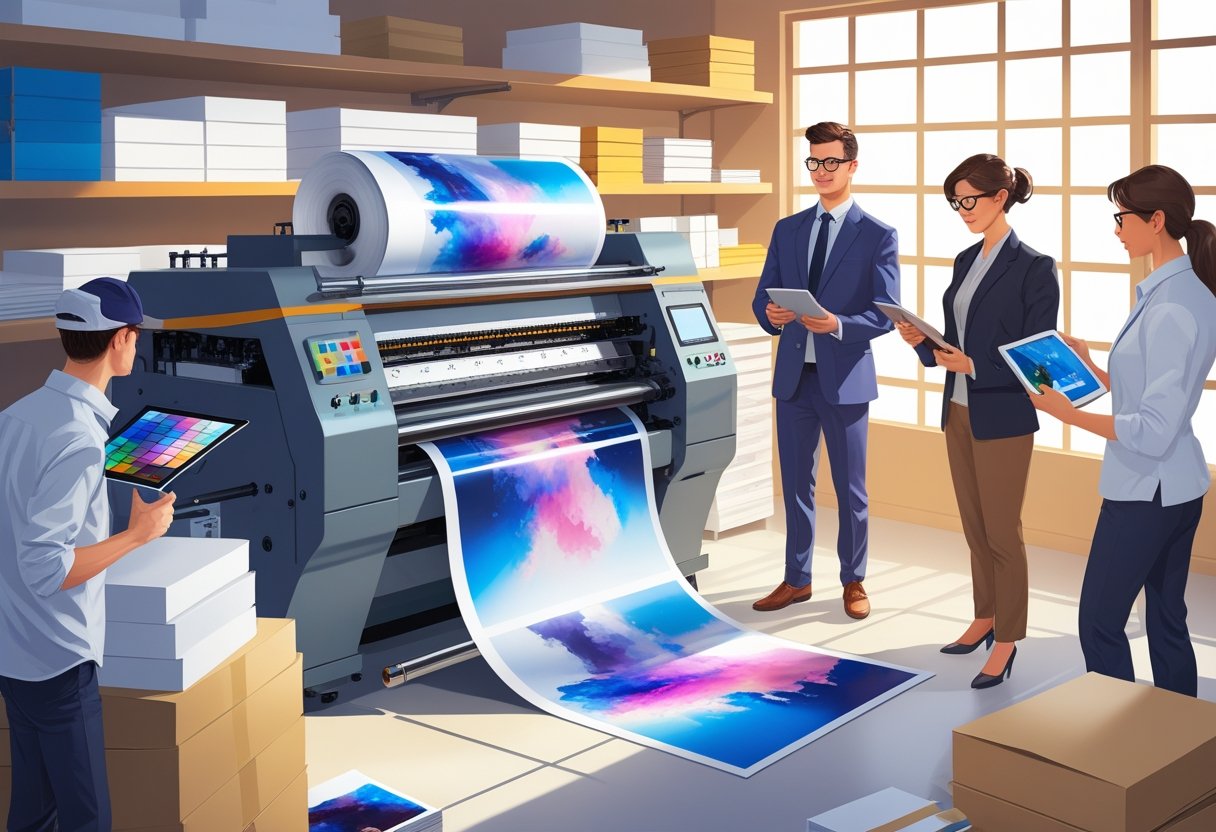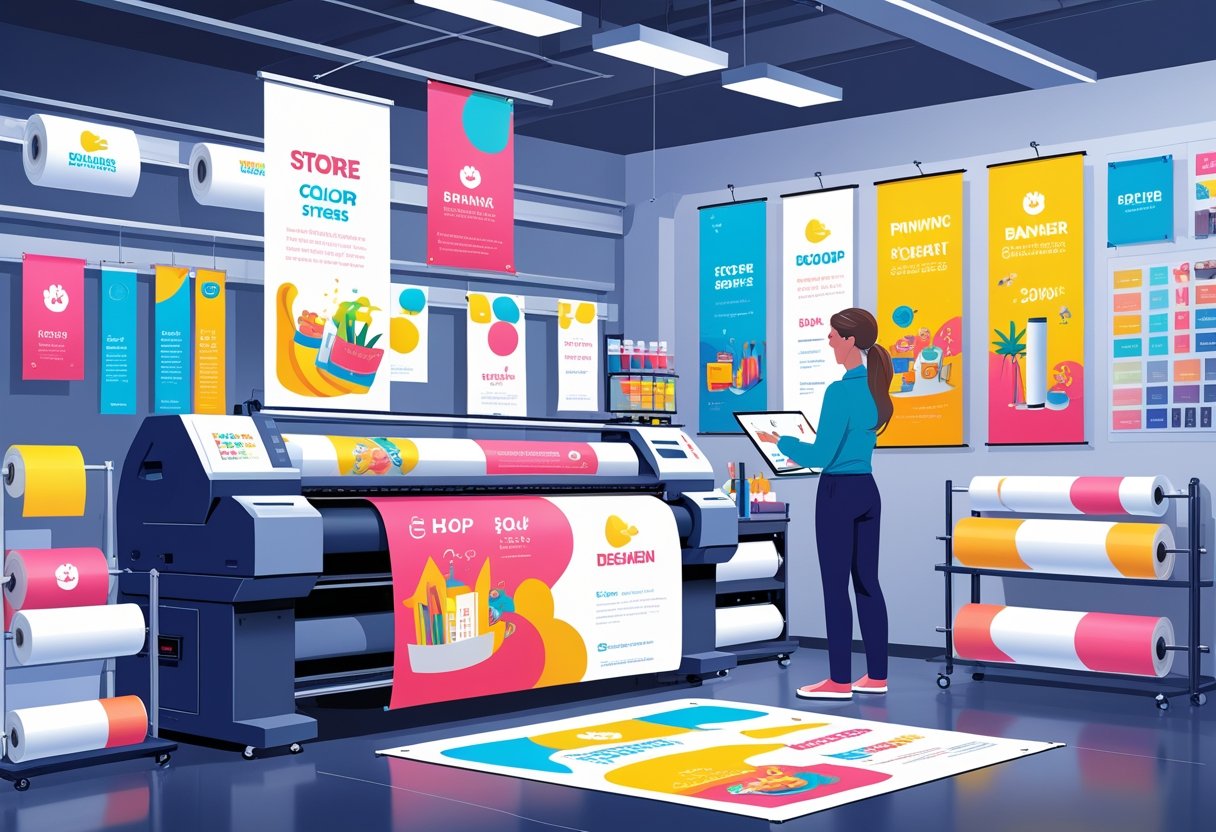Creating high-quality catalogs requires a blend of careful planning, professional design, and strategic execution. Focus on engaging visuals and clear messaging to captivate your audience and effectively showcase your products or services. High-quality images and well-written descriptions are essential, as they communicate the value of your offerings and leave a lasting impression on potential customers.
Partnering with a reliable printing service can make a significant difference in the final product. At Mail Processing Associates, we specialize in Comprehensive Mailing and Printing Solutions designed to meet the unique needs of your business. Utilizing advanced printing techniques and high-quality materials, we ensure that your catalog not only looks professional but also performs well in reaching your target audience.
As you embark on the journey of catalog creation, remember that the right tools and expertise can elevate your marketing efforts. By choosing Mail Processing Associates, you gain a partner committed to helping you optimize your mailing and printing processes, resulting in a polished and effective catalog that stands out in a competitive market.
Critical Prepress Steps for High-Quality Catalog Printing
Achieving high-quality catalog printing hinges on critical prepress steps. By focusing on file preparation, color specifications, and image resolution, you can enhance the overall quality of your printed materials.
Preparing Print-Ready Files
Start with a thorough review of all files before printing. Ensure that all designs, fonts, and graphics are properly embedded. This avoids issues such as missing or substituted fonts during the printing process.
Use PDF/X standards to create print-ready files. This format ensures color consistency and accurate representation of your design.
Make sure to include crop marks and a detailed color profile. This assists in guiding the printer during the cutting and setup processes.
Ensuring Proper Color Modes and Bleed
Select the correct color mode for your project. Typically, this will be CMYK for printed catalogs, which allows for vibrant colors in the final product. RGB should be used only for digital previews.
Adding bleed is essential to prevent unwanted white edges. A standard bleed size is usually 1/8 inch (0.125 inches) around the design. This ensures colors and images extend fully to the edge after trimming.
Double-check that all images and backgrounds extend into the bleed area.
Optimizing Image Resolution
Image resolution plays a significant role in print quality. Aim for a minimum resolution of 300 DPI for all images. This helps ensure sharp and clear visuals in your printed catalog.
Avoid using images pulled from websites, as they often have a lower resolution. Instead, source images from high-quality stock libraries or use original, high-resolution photographs.
If you must scale an image, do so cautiously. Enlarging a low-resolution image can lead to pixelation and a distorted appearance.
For the best results, consider working with a professional like Mail Processing Associates. Our expertise in printing ensures your catalogs stand out with quality.
Professional Catalog Design Tips
Creating a professional catalog requires attention to detail and an understanding of effective design principles. Focus on layout, page design, and the right software to ensure your catalog stands out and serves its purpose effectively.
Effective Layout Techniques
A well-structured layout guides your readers through the content seamlessly. Start with a clear hierarchy: headings should be prominent, and subheadings should differentiate sections. Consider using a grid system for alignment, as this helps create a balanced and organized appearance.
Utilize white space effectively; it enhances readability and draws attention to key elements. Keep your page count in check; longer catalogs may require more thought in layout to maintain engagement. Aim for a consistent font style and size throughout to give a cohesive look.
Incorporate visuals like product images alongside text. This not only breaks up the content but also reinforces your message. Be mindful of the flow; each page should build on the last, keeping the reader's interest intact.
Cover and Interior Page Design
Your cover is the first impression of your catalog, so make it visually appealing and reflective of your brand identity. Use bold graphics or high-quality images that showcase your products. Ensure your brand name and logo are prominent, and include a tagline to define your catalog’s purpose.
For interior pages, maintain a clean and consistent design. Use consistent colors and styles that align with your overall brand aesthetic. Integrate engaging visuals to complement the text, making sure they are high quality so they reflect positively on your business.
Incorporate clear call-to-action elements to guide readers toward next steps, whether that's making a purchase or visiting your website. Don't underestimate the power of good design; it can communicate professionalism and trustworthiness effectively.
Choosing the Right Design Software
Selecting the right software is crucial for producing high-quality catalogs. Adobe InDesign is an industry standard, offering powerful tools for layout and text management. It allows for precise control over each element, ensuring professional results.
For those seeking a more intuitive option, Canva provides user-friendly templates and design elements. It’s helpful for smaller projects and businesses without extensive design experience.
Whichever software you choose, make sure it supports your desired print materials and exports high-resolution files suitable for printing. At Mail Processing Associates, we can guide you in optimizing your designs for print and mailing, ensuring you achieve the best results.
Selecting Materials and Finishes for Superior Results
Material choice and finishing techniques play a critical role in achieving the highest quality for your catalogs. By carefully selecting paper stocks and incorporating finishing options, you can create a polished and professional look that captivates your audience.
Choosing Paper Stocks and Thickness
The thickness of your paper can affect not only the durability but also the aesthetic appeal of your catalogs. Thicker paper stocks provide a sense of heft and professionalism, making your material feel more substantial. Common weights include:
- Text weight (70-100 lb) for pages.
- Cover weight (80-120 lb) for covers.
Selecting the appropriate paper stock ensures better print quality and longevity. Consider options like coated stock for vibrant colors or uncoated stock for a more natural look. Products from Mail Processing Associates are tailored to meet specific needs, ensuring your choice enhances the overall presentation.
Sustainable and Recycled Paper Options
Sustainability is increasingly important in printing. Opting for recycled paper allows you to reduce your environmental impact without compromising quality. Look for papers that are labeled as recycled, which typically contain 30%-100% post-consumer waste.
These options can perform just as well in terms of print quality and can often be sourced from local suppliers, reducing your carbon footprint further. Choosing sustainable materials reflects positively on your brand. Mail Processing Associates offers eco-friendly printing solutions that align with your commitment to sustainability.
Enhancing with Finishing Touches
Finishing options enhance the look and feel of your catalogs significantly. Techniques such as spot UV, embossing, and foil stamping make specific elements stand out, creating a memorable impression.
- Lamination protects and adds gloss to your catalog, enhancing durability.
- Embossing adds a tactile dimension, catching light and drawing the eye.
These enhancements not only improve aesthetics but also signal quality to your customers. By partnering with Mail Processing Associates, you gain access to a variety of finishing services that elevate your printed materials and engage your audience effectively.
Modern Printing Techniques and Services
Understanding modern printing methods is crucial for creating high-quality catalogs. By utilizing the right techniques and selecting the appropriate services, you can significantly enhance the effectiveness of your printed materials.
Comparing Offset Printing and Digital Printing
Offset printing is a traditional method that delivers exceptional quality, especially for large print runs. It uses metal plates to transfer ink onto paper, resulting in sharp images and consistent colors. This technique is perfect for businesses that require high-volume printing with lower costs per unit.
On the other hand, digital printing offers flexibility and speed. It eliminates the need for plates, allowing for quick changes and small print runs without sacrificing quality. This method is ideal for personalized catalogs or immediate needs.
Variable Data and Advanced Print Methods
Variable data printing allows you to customize each catalog for different audiences. This technique enables you to change text, images, or graphics tailored to specific customers, significantly boosting engagement.
Additionally, advanced print methods like embellishments, high-quality finishes, and digital enhancements can elevate your catalogs further. Techniques such as UV coating or embossing provide a tactile experience that can make your catalog more memorable.
Selecting a Reliable Printing Service
Choosing a trustworthy printing service is essential for achieving your project goals. Look for providers that emphasize quality, technology, and customer service. Consider those with experience in catalog printing and a solid track record.
At Mail Processing Associates, our comprehensive mailing and printing solutions are designed to meet diverse business needs. Our expertise ensures your printing process is optimized for efficiency and quality. Make it a priority to assess samples and customer reviews to ensure you make an informed choice.
Binding and Assembly Options for Catalogs
Choosing the right binding method for your catalog is essential for functionality and presentation. The various options each provide unique benefits and considerations that can affect both durability and user experience.
Perfect Binding vs Saddle Stitching
Perfect binding is a popular choice for catalogs with a larger page count. This method involves using adhesive to bind the spine of the catalog, creating a sleek and professional appearance. It’s well-suited for thicker catalogs, offering a clean finish that showcases vibrant covers.
Saddle stitching, on the other hand, is ideal for thinner options, typically holding up to 64 pages. This method stitches through the center fold, allowing the catalog to lay flat, making it user-friendly. It’s often more cost-effective for short runs and is great for promotional materials.
Both methods have their merits, and your choice should reflect your catalog's purpose. For comprehensive mailing and printing solutions, consider partnering with Mail Processing Associates, where tailored services can optimize your production.
Exploring Spiral and Wire-O Binding Methods
Spiral binding involves inserting a plastic or metal coil through punched holes along the spine. This option is ideal for catalogs that require easy page turning, allowing them to lie completely flat. It's practical for use manuals or guidebooks, enhancing readability significantly. Additionally, spiral binding is durable, accommodating frequent handling without losing integrity.
Wire-O binding operates similarly but utilizes double-loop wire for a more elegant finish. This binding method is preferred for high-end catalogs as it adds a professional touch while also enabling the catalog to lay flat. Wire-O offers synchronization between pages, which can be beneficial for visually appealing content.
If you're looking for reliable binding solutions that suit your business needs, Mail Processing Associates provides expert services tailored to optimize your printing process.
Managing Print Quantities and Costs
Effective management of print quantities and costs is crucial for executing successful catalog projects. Understanding how to assess your needs and budget appropriately ensures you achieve high-quality results without overspending.
Assessing Your Print Quantities
Begin by evaluating your target audience and distribution plan. Determine how many catalogs you need based on factors like anticipated demand and your marketing strategy.
Consider the following:
- Market Size: Identify how many potential customers you aim to reach.
- Distribution Channels: Decide whether you will distribute catalogs in person, via mail, or online.
- Reprints: Factor in possible future print runs based on the initial response.
Working with Mail Processing Associates can streamline this process. We offer expert guidance tailored to your project’s specific needs, enabling you to make informed decisions about quantities that optimize both cost and impact.
Budgeting for High-Quality Production
Creating a budget for your catalog production involves several key components. High-quality catalogs typically require careful planning around both materials and printing techniques.
Focus on these areas:
- Design Costs: Invest in professional design services to ensure your catalog stands out.
- Material Selection: Choose quality paper and finishes that enhance the look and durability of your catalog, which can affect unit costs significantly.
- Volume Discounts: Printing larger quantities generally reduces the cost per unit. Consider producing bulk to lower expenses.
Mail Processing Associates specializes in comprehensive mailing and printing solutions that help you maximize your resources while maintaining quality. Your budget should reflect the need for high standards without sacrificing effectiveness.
Frequently Asked Questions
In this section, you will find specific answers to common questions regarding high-quality catalog printing. Each question targets critical aspects of the process that can significantly affect the final product.
What are the best practices for achieving high-resolution images in catalog printing?
To achieve high-resolution images, ensure that your images are at least 300 DPI (dots per inch). Using vector graphics for logos and illustrations can also help maintain quality. Consider file formats like TIFF or PNG, as they preserve image integrity better than JPEG.
How can I ensure color accuracy when printing catalogs?
To ensure color accuracy, use a calibrated monitor when designing your catalog. Always create your designs in RGB color mode and convert them to CMYK for printing. Request a physical proof from your printer to confirm that colors reproduce as expected.
What paper type and finishing options provide the best results for printed catalogs?
Choose a paper type that reflects your brand's message. Glossy paper can enhance color vibrancy, while matte paper offers a more sophisticated look. For finishing, consider options like UV coating or lamination to increase durability and add a professional touch.
How do I prepare my files for professional catalog printing to avoid common issues?
Prepare your files by ensuring all fonts are embedded and images are properly linked. Use the correct bleed settings to prevent white edges. Additionally, label your files clearly and provide a note detailing any specific requirements you have.
What are the cost-effective measures to maintain quality in catalog printing?
To maintain quality while being cost-effective, consider printing in larger quantities to reduce per-unit costs. Use online printing services like Mail Processing Associates for comprehensive solutions tailored to your needs. Optimize your design to minimize color changes and simplify printing processes.
How can the choice of printing technology impact the quality of a catalog?
The quality of your catalog can be heavily influenced by the printing technology used. Digital printing is best for short runs and variable data, while offset printing is ideal for high-volume runs, delivering consistent quality. Choose a provider that offers the technology best suited to your catalog's needs.






.png)






